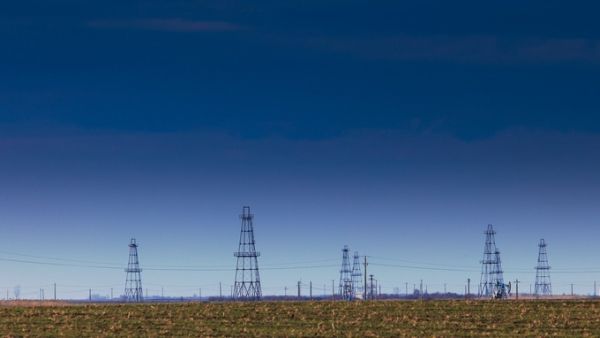By slashing the estimated amount of recoverable oil buried in California’s vast Monterey Shale deposits by 96 percent, from 13.7 billion barrels of recoverable assets to a mere 600 million barrels, the EIA has struck “a blow to the nation’s oil future” Los Angeles Times reported. The correction deflated the very enthusiasm behind the US energy independence mantra.
Until the latest EIA report, the Monterey Shale was known to contain about two-thirds of the nation’s shale oil reserves. Industry has been highlighting the reserves as the big game-changer for US oil and gas production. A euphoria was definitely there. Nick Grealy, of No Hot Air, predicted last year that “the star of the North American show is barely on most people’s radar screens. California shale will... reinvigorate the Golden State’s economy over the next two to three years.”
A 2011 EIA report, compiled by Intek Inc. on its behalf, had underlined that the Monterey shale constituted “64 percent of the total shale oil resources” in the US. The formation was believed to contain more than double the amount of oil estimated at the Bakken shale in North Dakota and five times larger than the Eagle Ford shale in South Texas. And already about a million barrels of oil a day are flowing from the Bakken Shale and even more is coming from the Eagle Ford. Monterey was also projected to bring as many as 2.8 million new jobs to California and boost its tax revenue by $24.6 billion annually.
The Intek Inc. study for the EIA had relied largely on oil industry claims rather than proper data, reports in global press are now underlining. Hitesh Mohan, who authored the erroneous Intek study has reportedly conceded that “his figures were derived from technical reports and presentations from oil companies, including Occidental Petroleum, which owns the lion’s share of oil leases in the Monterey Shale, at 1.6 million acres.” Although EIA estimates did not go to the extent, yet Mohan had earlier lifted his original estimate of the recoverable oil in the formation to 17 billion barrels instead of the formal 13.7 billion barrels.
There were skeptics all around. J. David Hughes, who worked for the Geological Survey of Canada for 32 years, said: “The oil had always been a statistical fantasy. Left out of all the hoopla was the fact that the EIA’s (original estimate of 13.7 billion barrels) estimate was little more than a back-of-the-envelope calculation.” The Monterey formation “was always mythical mother lode puffed up by the oil industry - it never existed.”
Does this mean that the much hyped and talked over Shale Revolution, changing the global energy order, is now exploding? Many seem to be jumping to that conclusion. Quoting Tod Brilliant of Post Carbon Institute, Dr. Nafeez Ahmed, writing in Guardian says “given the incredible difference between initial projections of 15 billion barrels and revisions to 600 million, does this not call into account all such global projections for tight oil?”
Is this really the end of the shale story? No, not necessarily!
It is not that the reserves are not there. It is there. Yet the technology to unravel the asset from the formation is still missing. The problem here is with the geology of the Monterey Shale, a 1,750-mileformation running down the center of California roughly from Sacramento to the Los Angeles basin and including some coastal regions. Unlike heavily fracked shale deposits in North Dakota and Texas, which are relatively even and layered like a cake, Monterey Shale has been folded and shattered by seismic activity, with the oil found at deeper strata. And this is the problem.
EIA officials still believe there is an enormous oil deposit in the formation. “The rocks are still there,” EIA Administrator Adam Sieminski underlined. “The technology’s not there yet.”
The EIA slashing of estimates of recoverable oil from the formation was based, in part, on a review of the output from wells where the new techniques were used. “From the information we’ve been able to gather, we’ve not seen evidence that oil extraction in this area is very productive using techniques like fracking,” said John Staub, who led the research on behalf of the EIA.
“Our oil production estimates combined with a dearth of knowledge about geological differences among the oil fields led to erroneous predictions and estimates,” Staub admitted, rather candidly. Compared with oil production from the Bakken Shale in North Dakota and the Eagle Ford Shale in Texas, “the Monterey formation is stagnant,” Staub said, underlining the potential for recovering the oil could rise if new technology is developed.
Many seem to agree. A spokesman for the oil industry expressed optimism that new techniques will eventually open up the Monterey formation. “We have a lot of confidence in the intelligence and skill of our engineers and geologists to find ways to adapt,” said Tupper Hull, spokesman for the Western States Petroleum Assn. “As the technologies change, the production rates could also change dramatically.”
Rock Zierman, chief executive of the trade group California Independent Petroleum Assn., which represents many independent exploration companies, also sounded hopeful.”The smart money is still investing in California oil and gas,” Zierman said. “The oil is there,” he added.
The 600 million barrel figure is the government’s estimate of how much oil drillers can get out of the earth with existing technology and at current prices. And based on the handful of wells that have been drilled, the Monterey is proving to be tough for energy companies to tap, underlines Russell Gold in WSJ.
Unlike the Bakken Shale in North Dakota, or the Eagle Ford in Texas, the geology of the Monterey is complex, riddled with faults. Its oil is deeply buried, and its rocks aren’t amenable to being fracked, as they are elsewhere. This shouldn’t (hence) come as a surprise to anyone paying attention, Gold points out. Companies focused on the Monterey, such as Venoco Inc., have been warning investors that the California shale was different from other shales. And oil output has been lackluster.
Drilling is a tough business. Projections do waver - and at times - by far. And the same seems to have happened to Monterey too - like many others in the history of drilling. Until Dammam 7 sprang into life, way back in the 1930s, drillers were dejected over oil prospects in Saudi Arabia too. Yet after years of wilderness, Dammam 7 changed the course of history.
To be fair, despite the setback, the shale revolution is still far from over. It is still to go a long, long way.

The 600 million barrel figure is the government’s estimate of how much oil drillers can get out of the earth with existing technology and at current prices.








